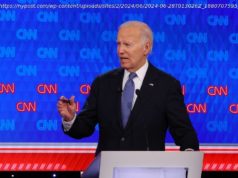As children and teachers started returning to classrooms over the past few weeks, new cases of COVID-19 emerged, forcing some schools to temporarily shift …
As children and teachers started returning to classrooms over the past few weeks, new cases of COVID-19 emerged, forcing some schools to temporarily shift to online-learning only and hundreds of students to quarantine at home until their health was assured. While those developments have been well-documented, it’s what remains unknown that has been more troubling for some parents and educators. Information that schools, health officials and state agencies share about known cases varies substantially, leaving some stakeholders to wonder how safe they or their children may be when new cases emerge. In Gainesville, Florida, where several staff members working at an in-person summer program contracted the coronavirus, the absence of a community-wide notification protocol allowed rumors and fear to spread. Despite assurances from district officials that they will share as much information as they can about cases this fall, some parents and teachers remain skeptical that they will learn enough soon enough to feel safe. “Are you going to tell us what’s going on? How are we going to find out about cases?” asked Janine Plavac, a nurse and teacher who is director of the Academy of Health Professions at Gainesville High School. “Right now, I have no faith in transparency in this district.” Melissa Tines, a mother of three children attending classes in Evansville, Indiana, said it is important that communication not be limited only to people with known exposures. She wants to know how many COVID-19 cases emerge in those schools – even if they don’t involve her kids. “I would be able to discuss with my kids how to be cautious,” she said. “If it was something that became a problem where the number was creeping up, then I may be able to make the decision that school isn’t a safe option, and we may have to bring them home.” Federal law prohibits the disclosure of personal medical records by health providers, and no one is asking that people who contract the virus be identified on local news broadcasts. Yet in many cases, school leaders have prioritized personal privacy over the public right to know, even though HIPAA, the medical privacy law, does not apply to schools, and FERPA, the educational privacy law, does not bar schools from releasing case information so long as people aren’t named. Most schools already practice balancing privacy and public health notifications. Principals send letters home alerting parents to cases of lice or providing guidance on meningitis symptoms when someone in the school has become ill. If attendance drops below normal because of the flu, schools sometimes advise parents to keep their kids home when ill and reinforce good hygiene habits. The U. S. Department of Education released additional guidance this spring specific to the novel coronavirus, a global pandemic with risks and scale unmatched by the typical public health challenges managed by schools. In some cases, the agency said those extraordinary circumstances might mean that schools would even need to share details that could identify a person with the coronavirus so others can “take appropriate precautions.” Yet over and over again across the country, new cases emerge and some schools choose to notify only people who’ve had prolonged direct contact with the patient. No notice to others in the school building. No alert to parents. No answers for reporters seeking to confirm or deny local rumors. In a recent case in Naples, Florida, school officials refused to say how many people had to quarantine at home after an exposure. An emailed statement from the school district read in part, “It is not appropriate for us to disclose sensitive medical information, which if we did, would otherwise conflict with our obligations under FERPA and HIPAA.” In other parts of the country, school officials have opted for as much transparency as possible. Several superintendents said that it not only is the right thing to do but that it will help build trust in the community during a time of anxiety and uncertainty. “The greater good and the greater need for community health knowledge is superseding our usual complete and total protection of individual privacy,” said Michael Lubelfeld, superintendent of North Shore School District 113 in Highland Park, Illinois. “I don’t want to shield them from the truth. We’re all in this together. They have a right to know – especially because we’re a public school district funded by the public and they’re entrusting us with their kids.” To better understand how local and state governments are balancing personal privacy with the public’s right to know, USA TODAY surveyed the state health departments and education departments in every state and interviewed officials from dozens of schools across the country. Reporters found that decisions about how to communicate about positive cases among students or staff have largely been left up to individual school districts, sometimes in coordination with local health departments, because state leaders often have not provided any guidance.
Home
United States
USA — mix New coronavirus cases are emerging at schools. How much you know depends...




![Demokraci powinni zastanowić się, czy nie zmienić kandydata [OPINIA]](http://nhub.news/wp-content/uploads/2024/06/thumbe05420ea69d46ac6df9b8a9ccbce99a2-100x75.jpeg)

